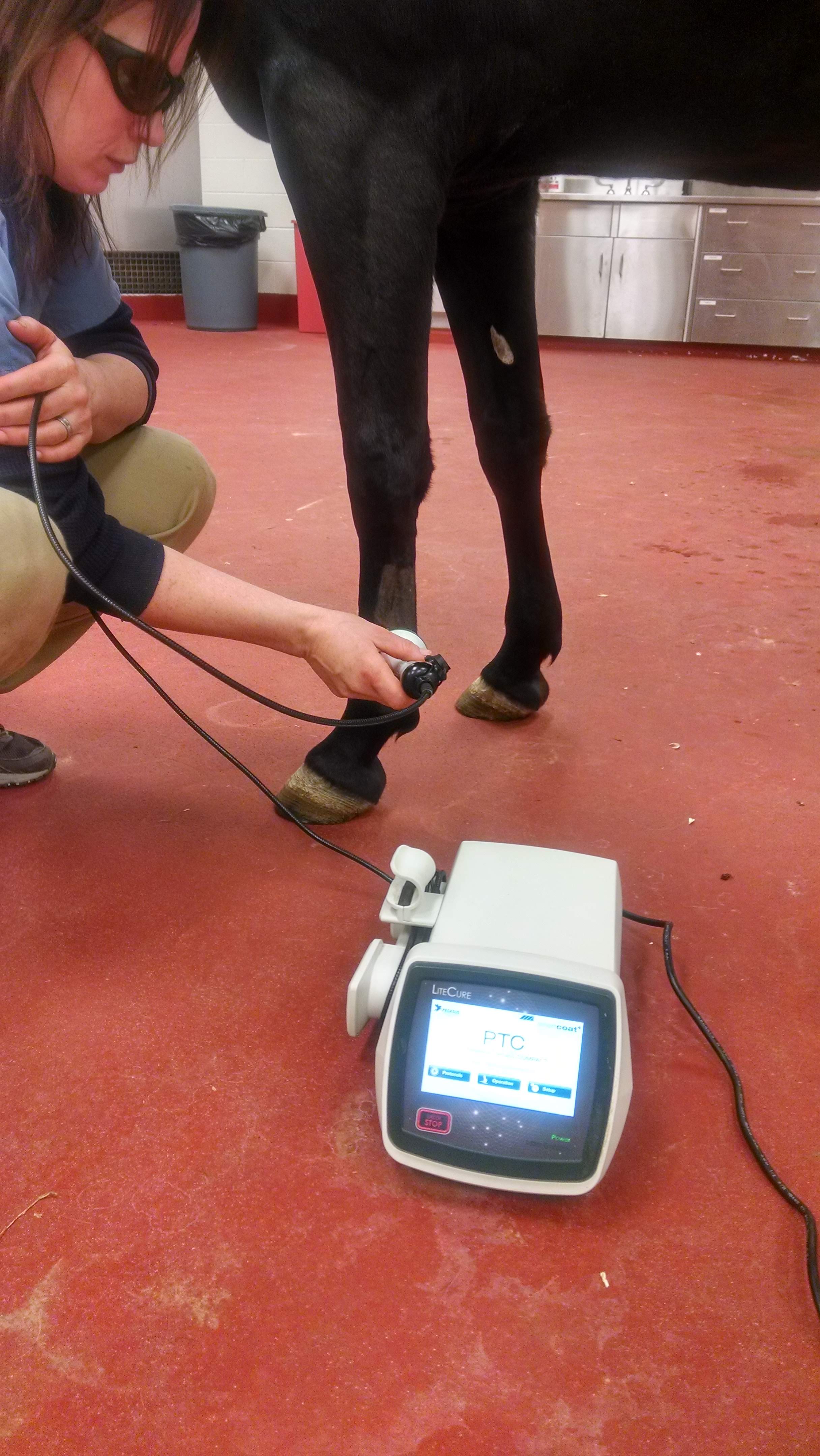Equine Therapy for Injury Recuperation: How Equines Aid Heal Emotional Wounds
Equine Therapy for Injury Recuperation: How Equines Aid Heal Emotional Wounds
Blog Article
Exactly How Laser Therapy in Equine Therapy Is Reinventing Vet Care for Equines
Laser therapy has actually emerged as a transformative technique in equine veterinary care, supplying a non-invasive option that speeds up recovery and boosts total health and wellness. The mobility and adaptability of laser treatment tools further underscore their growing necessity amongst vets.

Recognizing Laser Therapy
Comprehending laser therapy is necessary for appreciating its role in equine treatment. Laser treatment, additionally referred to as photobiomodulation, entails the application of particular wavelengths of light to cells, which can lead to various organic results. This restorative technique harnesses the power of light power to penetrate the skin and underlying tissues, stimulating cellular processes and boosting cells repair service.
The innovation behind laser therapy is grounded in the principle of photochemistry, where photons are absorbed by chromophores within cells, bring about boosted ATP production and modulation of responsive oxygen varieties. This, in turn, promotes cellular spreading, decreases swelling, and speeds up healing. Vet specialists utilize various kinds of lasers, consisting of low-level lasers (LLLT) and high-power Class IV lasers, depending on the particular therapeutic objectives and the nature of the equine condition being treated.
Various laser wavelengths and power settings are meticulously chosen to target various tissue midsts and attain preferred clinical end results. Safety and security methods are vital, as inappropriate use can bring about thermal damages or suboptimal restorative effects. Thus, a comprehensive understanding of laser treatment's systems and applications is crucial for its reliable application in equine vet method.
Benefits for Horse Wellness
The myriad benefits of laser treatment for equine health and wellness encompass boosted healing, pain decrease, and improved movement. This advanced treatment technique leverages details wavelengths of light to pass through cells, stimulating cellular feature and advertising rapid cells repair service. The non-invasive nature of laser treatment guarantees very little anxiety and pain for the equine, helping with a smoother recuperation process.

Improved movement is an additional important advantage, particularly for performance and functioning steeds. By minimizing swelling and pain, and boosting cells repair work, laser therapy helps in restoring joint feature and muscle versatility. The collective impact of these advantages is not only a quicker return to normal task but also an overall improvement in the steed's quality of life. Hence, laser treatment stands as a transformative device in modern horse vet care.
Usual Conditions Treated
Laser therapy has actually emerged as a versatile treatment option for a variety of typical equine conditions. Furthermore, laser therapy is effective for conditions like osteoarthritis, where it aids mitigate joint swelling and promote tissue repair service.
Wound management is one more area where laser therapy has shown considerable guarantee. Chronic wounds or slow-healing abscess can be specifically challenging in horses, but laser therapy enhances cellular regrowth and boosts blood flow, therefore quickening the healing process. Furthermore, laser therapies have been efficiently employed in handling unguis conditions such as laminitis and abscesses, easing pain and advertising faster healing.
Horse athletes typically endure from performance-related problems like muscular tissue discomfort and stress fractures. Laser therapy aids in lowering muscular tissue exhaustion and expedites the healing of micro-injuries, thus making sure that steeds return to peak efficiency faster. By addressing these diverse conditions, laser therapy is changing the landscape of vet care, giving a non-invasive, reliable alternative to typical treatments.
Modern Technology Behind Laser Therapy

Laser devices made use of in vet medication frequently use low-level laser therapy (LLLT) or cold laser treatment. Unlike high-powered medical lasers, these tools run at lower power degrees, optimizing therapeutic benefits while reducing thermal damage. The energy from the laser light promotes adenosine triphosphate (ATP) production, boosts cellular metabolic process, and speeds up tissue repair procedures.
Modern laser therapy equipment for equine therapy is developed with adjustable settings to deal with the particular needs of various tissues and problems. Equine Therapy. Specifications such as wavelength, power thickness, discover this and treatment duration can be carefully tuned, using tailored therapeutic options. Furthermore, developments in laser modern technology have resulted in the development of mobile, handheld gadgets, making it simpler for veterinarians to supply therapy this article in a selection of setups, from centers to stables. This technical development is a foundation in the transforming of equine vet treatment.
Success Stories and Study
Showcasing the tangible benefits of laser treatment, various success stories and study brighten its transformative impact on equine wellness. One such instance entails a thoroughbred racehorse suffering from persistent tendonitis. Conventional treatments yielded minimal enhancement, yet after integrating laser treatment right into the program, the steed showed substantial reductions in inflammation and pain within weeks, inevitably returning to competitive auto racing.
One more engaging example includes a dressage steed identified with extreme back pain, limiting its efficiency. A veterinary group used low-level laser treatment (LLLT) to target the inflamed locations, resulting in marked enhancement in flexibility and a notable decline in pain. Over several sessions, the horse restored its peak type, showcasing the efficacy of laser therapy in attending find to musculoskeletal problems.
Additionally, a research study conducted at a leading equine center examined 50 horses with numerous soft tissue injuries treated with laser treatment. The outcomes were striking: 85% of the steeds showed sped up healing times and improved movement. These situations highlight the versatility and performance of laser treatment in equine medicine, supplying a non-invasive, scientifically-backed technique to boosting recuperation and performance in equines.
Final Thought
Laser treatment is revolutionizing equine veterinary treatment by supplying a non-invasive therapy that accelerates recovery, reduces swelling, and relieves pain. With its effectiveness in treating a series of conditions, from musculoskeletal injuries to chronic disorders like osteo arthritis, this innovation significantly enhances equine wellness and wheelchair. The portability and versatility of laser treatment better emphasize its transformative effect on vet practices, strengthening its function as a vital tool in modern-day equine health care.
Report this page